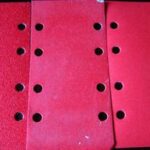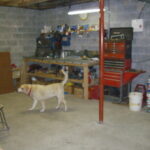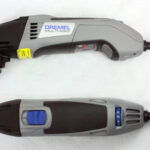A circular saw is a great tool to have around the house or workshop as it can cut through many different materials such as metal, wood and plastic. I have used a circular saw on many occasions for both personal projects as well as at my job at a hardware store. Due to the open nature of the saw there are many safety precautions to keep in mind. This article will take a look at safety tips and other useful tips for using and maintaining a circular saw.
1. Manual
Read the manual that comes with the circular saw before attempting to use the tool. Even with experience you can still be injured using the saw since every saw is different; therefore reading the manual is a great idea no matter what your experience level.
2. Safety first
Circular saws can be very loud so I recommend using ear protection when using the saw. Safety glasses are always a good idea while using a circular saw because the blade teeth can chip (although very rare) and wood can splinter and come at you.
3. Cleaning
Table saws build up sawdust very easily and with time it can damage the saw and make it not work properly. You should periodically make sure that you clean the sawdust build up.
4. Blades
There are many different circular saw blades on the market for various materials; you should only use the recommended blade for the job at hand. You do not want to be using a metal cutting blade for a piece of plywood.
5. Clear your work area
Although most circular saws have an auto shut off if your finger lets go of the trigger you should always clear your work area to reduce accidents.
6. Different saws for different tasks
Circular saws can be used for different cuts but traditionally you will want to use it for long straight line cuts. Use the correct saw for the correct job; do not try to save money by using a saw that is not recommended for the job.
7. Keep blade depth just below the piece you are cutting
When attempting to cut anything you should not allow the blade to have much room below the piece you are cutting. This prevents injury and also prevents damage to anything below what you are cutting. If you leave the blade a shallow depth and it is not deep enough you can always go back.
8. Keep the blade clean
For a smooth clean cut you should keep dirt, sawdust, and any other junk off the blade. When removing any buildup on the blade you should always have the power turned off.
9. Start the power before making contact
Before the blade touches any surface it should be running so that you get a nice clean cut from start to finish.
10. Make sure the cut piece is supported
After the cut is done one end of it will fall down; although common sense you should have another person or yourself holding the cut piece so that it does not fall on you or get damaged.
Sources:
Personal experience





